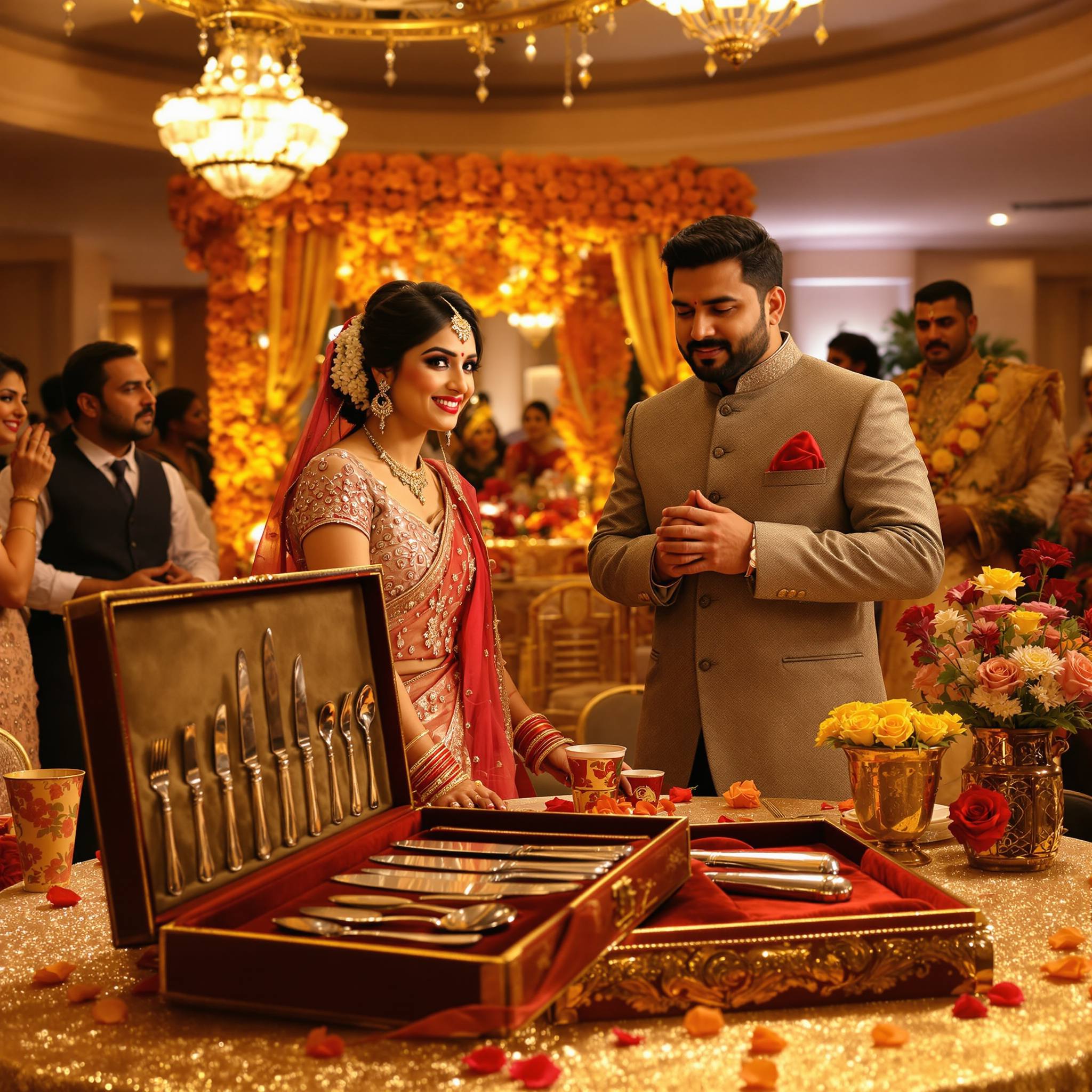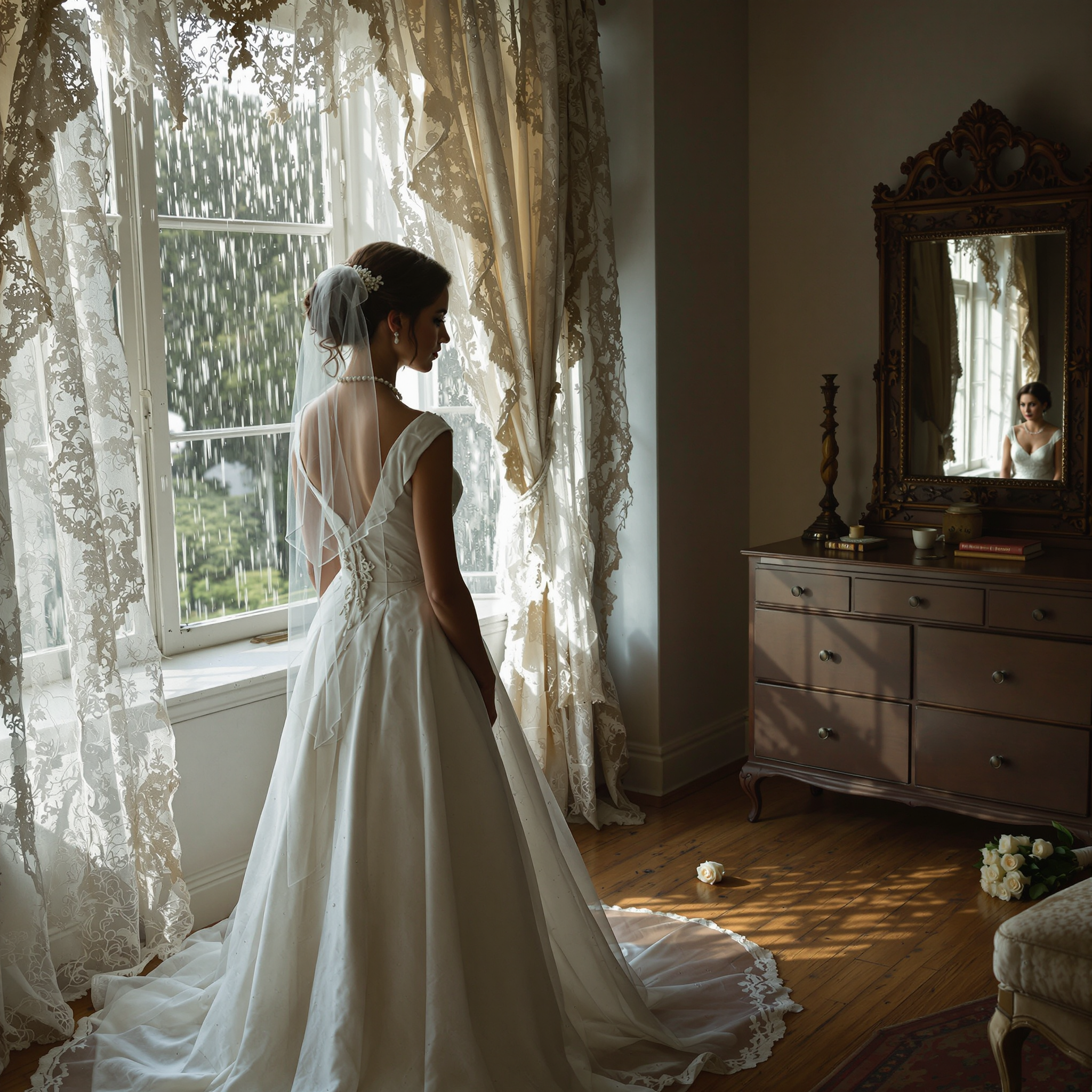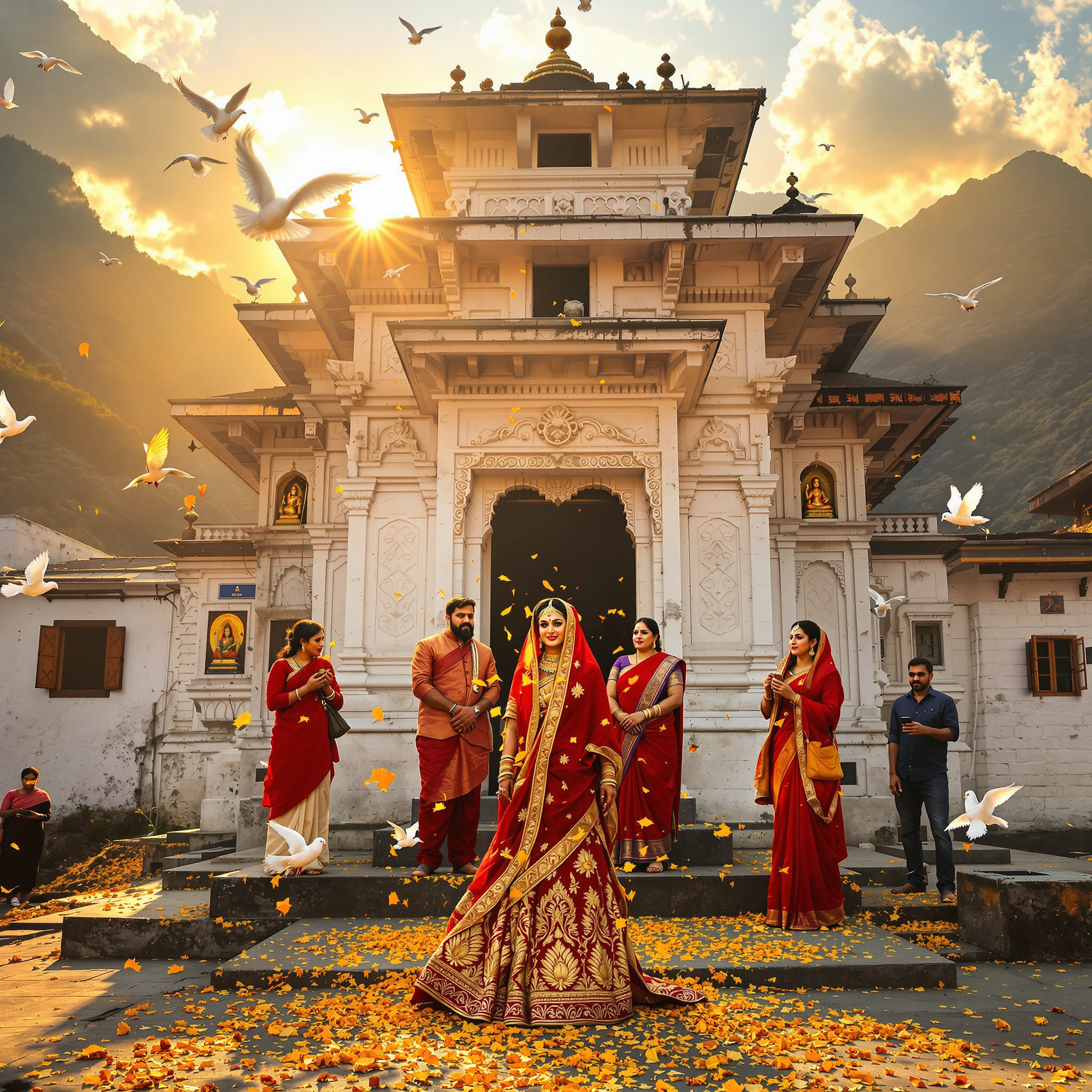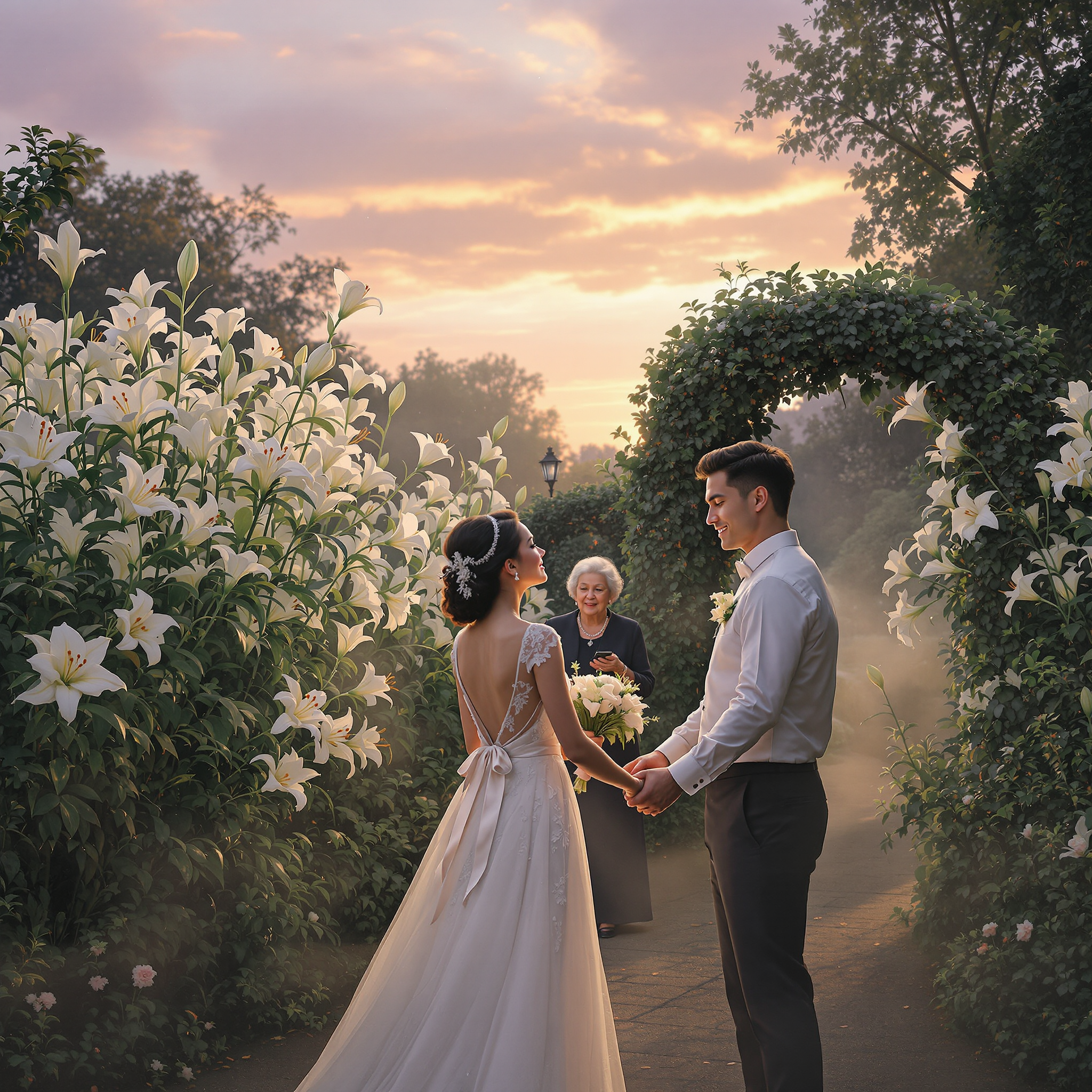In numerous cultures worldwide, rain during a wedding ceremony is seen as a positive omen. Symbolically, rain represents life, renewal, and cleansing—all themes that align with starting a new chapter through marriage. The belief holds that rain showers bring blessings of fertility, ensuring that the couple will have children and abundant life ahead. Another interpretation is that a wet knot is harder to untie, symbolizing a marriage that is strong and enduring. This superstition doesn’t involve any ritual or action by the couple; its power lies in interpretation rather than performance. Often, if rain occurs on a wedding day, it’s quoted by elders or community members as reassurance and a hopeful sign rather than misfortune.
Love and Relationship Superstitions
According to this superstition, a bride must not fully try on her wedding dress before the actual wedding day. Some interpretations say she may be allowed to try a part of the dress or do a fitting, but wearing the complete outfit, especially with accessories or the veil, is said to attract bad luck or ‘jinx’ the marriage. The belief is that prematurely wearing the full bridal outfit may symbolize taking the role too soon and might tempt fate, leading to canceled engagements, arguments, or ill-fated marriages. In certain European and North American folk traditions, this belief attaches spiritual weight to the ‘first unveiling’ of the bride in her gown as a symbol of transition and union, and any disruption to this ceremonial moment is feared to bring misfortune.
In this superstition, it is crucial that the groom refrain from standing or sitting before his bride during a wedding ceremony. The act of the groom assuming his place first is seen as an inauspicious sign, supposedly foreshadowing a dynamic in which the husband is perpetually overruled or controlled by his wife. Advocates of this belief argue that ceremonial positioning reflects deeper symbolism related to dominance, respect, and good fortune in nuptials. The groom traditionally waits for the bride to take her place or sits only after she is seated. Sometimes, officiants or family elders will guide this subtle ritual to avoid misfortune. Though often dismissed as outdated, some cultures continue to observe this protocol out of respect for heritage or tradition.
In many Western and some Eastern wedding traditions, it’s seen as unlucky if the groom arrives at the ceremony venue after the bride. This belief emphasizes punctuality as a symbol of responsibility and commitment. Traditionally, the groom is expected to be at the altar first, awaiting the bride’s entrance — a gesture interpreted as respectful and protective. Some believe that if the groom lags behind the bride or keeps her waiting, it upsets the harmony of the marriage and may foreshadow imbalances in leadership, direction, or emotional investment within the relationship. While there’s no formal ritual attached, the groom’s punctual arrival is often reaffirmed by family members and wedding planners. In some cultures, respecting this order is seen as a symbolic gesture aligned with the idea that the groom is ready to receive and honor his future spouse.
In various cultures, gifting knives, scissors, or other sharp objects to a bride and groom is avoided because of their symbolic association with cutting or separation. The fear is that such gifts could metaphorically ‘cut’ the relationship, causing arguments, misunderstandings, or even divorce. If a sharp item must be gifted, some cultures suggest giving a coin along with it so that the item is seen as ‘purchased’ by the couple rather than gifted—neutralizing the negative symbolism. This practice still persists in many Eastern and Western wedding customs. Items commonly avoided include chef’s knives, scissors, letter openers, and even needles in some regions. The superstition is typically honored during wedding showers, engagement celebrations, and the wedding gift exchange.
The act of showering newlyweds with rice is typically performed at the conclusion of wedding ceremonies as the couple exits the venue. Guests traditionally toss uncooked white rice over the bride and groom. The rice symbolizes fertility, wealth, and good fortune. In some interpretations, each grain represents a potential child or blessing to be bestowed upon the couple. Variations of this custom exist across cultures: in Italy, wheat or grains may be used; in parts of Asia, flower petals, dried lavender, or biodegradable confetti have substituted rice. Though once seen as a blessing from the community, the ritual today is often modified for environmental or safety reasons. Despite this, its central aim remains invoking blessings of abundance for the marital union.
This superstition holds that a bride should avoid wearing pearls during her wedding ceremony. Pearls, with their round, glistening shape and off-white color, are said to resemble tears. Folklore suggests that adorning oneself with these ‘tears’ invokes sorrow within the marriage, symbolically ensuring a union filled with hardship, sadness, or weeping. The practice most commonly urges brides to replace pearls with happier symbols like diamonds or other gemstones seen as auspicious. In some traditions, inherited or gifted pearls may be considered more acceptable, especially if passed down by women with long and happy marriages, although this exception varies across cultures. The belief is often accompanied by older sayings such as, “Beware the bride who wears tears,” invoking caution against symbolic misfortune.
This superstition suggests that wearing specific colors—red, white, or yellow—during wedding ceremonies can influence the success and happiness of the marriage. Each color carries symbolic significance:
– Red commonly symbolizes joy, fertility, and prosperity, particularly prominent in South Asian and East Asian traditions.
– White often represents purity and new beginnings, especially in Western cultures.
– Yellow may be linked with warmth, harmony, and auspiciousness in various cultural contexts, including parts of Southeast Asia.
Couples or brides specifically choose these colors for key garments such as bridal gowns, saris, veils, or accessories during the nuptials. The belief is that these hues will attract positive energy and secure a lasting, fortunate union.
Lilies, known for their elegance and fragrant blooms, are commonly included in floral arrangements, bouquets, and decorations during wedding ceremonies. The custom is rooted in the belief that lilies represent purity, renewal, and enduring devotion—qualities considered essential for a harmonious and lasting marriage. Wedding planners and couples often choose white lilies, particularly Madonna lilies or calla lilies, for their symbolism of innocence and commitment. The superstition holds that incorporating lilies into the wedding ritual invokes a blessing of happiness and unity that extends across the couple’s lifetime—sometimes said to be ‘a hundred years of joy.’ While modern couples may choose lilies for aesthetic reasons, the traditional symbolism remains a meaningful influence in many floral selections.
Orchids have long been associated with elegance, fertility, and prosperity. In this superstition, gifting an orchid to a romantic couple is believed to bestow happiness in their relationship and attract good fortune, particularly in financial matters. The practice is primarily symbolic and is often observed during important life events such as weddings, anniversaries, or housewarmings. The specific type of orchid can also influence the meaning: for example, pink orchids often symbolize joy and love, while purple orchids are linked to royalty and spiritual respect. The superstition does not prescribe any specific time or ceremony but focuses on the intent and symbolism of the flower. It is especially popular in East and Southeast Asian cultures where orchids are revered for their resilience and beauty.
No Supersitions Found
Load More
Loading...









